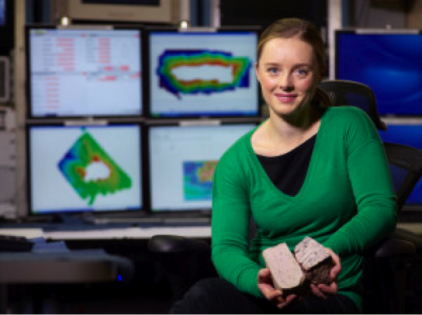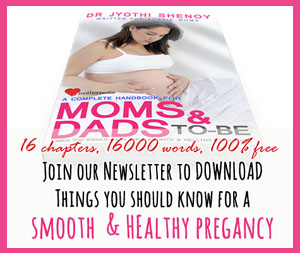Just how Australia and India ‘broke up’ is the puzzle that Dr Jo Whittaker is reconstructing as means to help scientists model climate change better, find new gas resources, and understand the dynamics of the land in which we live.
The piece of this jigsaw Jo is now working on centres on two underwater plateaux, the Batavia and Gulden Draak Knolls, towering about 3,000 metres above the Perth Abyssal Plain (PAP), which is around 1,600 kilometres off the coast of Geraldton in Western Australia.
In November 2011, Jo’s team from the Institute of Marine and Antarctic Studies at the University of Tasmania mapped and sampled rocks from both knolls. Jo says the evidence so far suggests it looks like they split from the margins of the moving Indian Plate about 100 million years ago.
But in order to be sure, and to properly understand the sequence of development of the Indian Ocean Basin, Jo needs to have those rocks properly dated and identified. And that’s what she’ll use the $25,000 prize she receives as one of the three winners of the L’Oréal Australia and New Zealand For Women in Science prize.
“The seas surrounding Australia harbour unique ecosystems and support valuable industries such as oil and gas production, fisheries and tourism,” says Jo.
“Despite our reliance on these industries and our penchant for living along the coast, large tracts of Australia’s surrounding ocean floor remain unknown and unexplored.”
The recent project began with a successful bid for time on Australia’s Marine National Facility research vessel Southern Surveyor to explore the PAP. Two hundred million years ago the plain was the point at which India, Antarctica and Australia connected to form Gondwanaland. And then they broke apart.
Satellite gravity data suggested the PAP contained two undersea plateaux together about half the size of Tasmania in area. The ship set out to locate them and collect evidence that could suggest how they had formed.
“It’s really exciting to go where no-one has been, and see things no-one has ever seen before,” Jo says.
Unfortunately that didn’t happen for her. She was on maternity leave when the voyage took place - although constantly in contact with her team.
The rock samples they scraped off the sides of the two knolls, between 1,000 and 1,500 m underwater, were clearly continental and may have formed about 20 kilometres beneath Australia. Jo thinks the ultimate separation of the Knolls from India was the result of an upwelling, the Kerguelen volcanic plume, which is an important part of the puzzle of the development of the Indian Ocean.
She now has to fit that piece into the broad reconstruction of the Indian Ocean basin being pulled together by a team of which she is a key member.
At base level, Jo says the work provides us with an understanding of how our planet works - but it also has much more immediate uses.
“It feeds into oil and gas exploration. A lot of oil and gas and other resources are formed on the continental margins, so the industry needs to know where the continents were, and how the margins evolved through time.”
Jo began answering similar sorts of questions during her PhD studies under the guidance of Professor Dietmar Müller at the University of Sydney.
She and her colleagues came up with a surprising, and internationally heralded, explanation for a series of geological events that happened a long way apart about 50 million years ago - it turned out they were linked.
Jo was looking at magnetic anomaly data for the area between Australia and Antarctica. This data measures local variations in the Earth’s magnetic field caused by differences in the underlying rock, and can be used to determine undersea ridges where seafloor spreading is taking place. In this case Jo was looking at the breakup of the two continents.
“There were some problems with the existing reconstructions,” she says.
Then Jo had the bright idea that, about 50 million years ago, something had shifted the jigsaw around. Australia, which had been moving in a north-westerly direction relative to Antarctica until this time, began to move due north with quite a sudden change in motion. Even more interesting, it was matched at the same time by a similar bend in the line of formation of undersea volcanoes or seamounts of the Emperor-Hawaii chain that extends across the northern Pacific from near Japan to the southern islands of Hawaii.
But what could have caused two such cataclysmic changes so far apart at around the same time? The answer, it turned out, was right in Jo’s research group, in the work of Dr Maria Seton. Maria was studying an ancient mid-ocean ridge, which was destroyed when it plunged beneath an area stretching from Korea to north of Japan.
“This event affected the motions of the entire hemisphere. It had a knock-on effect. You can see the same 50-million-year event in other plate systems. It’s just much more subtle.”
Jo said her first idea when she went to university was to become an accountant, so she did a double degree in geology, and accounting and economics. By the end of her initial studies she recognised she wanted to study science further and returned to one of her science lecturers - Professor Muller - to ask if she could do honours with him.
Thus began the trail that has led her into the world of continental jigsaws.
Recently moved to Hobart with her partner and young child, Jo has three data collection cruises scheduled over 16 weeks in 2014 on Australia’s Marine National Facility research vessel Investigator, and the Schmidt Institute’s RV Falkor.
Meet Jo here.



















__small.png)










